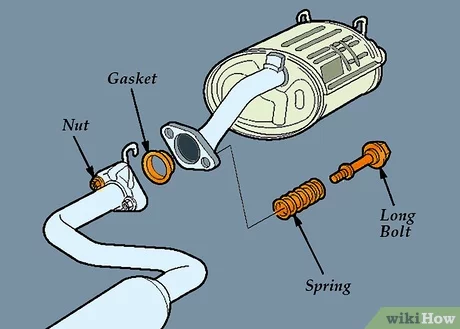how long can i drive with low coolant
Introduction
Driving with low coolant can be dangerous and can cause serious damage to your vehicle. It is important to know how long you can drive with low coolant before you need to top it off or take your car to a mechanic. Depending on the severity of the leak, you may be able to drive for a few days or even weeks before needing to refill the coolant. However, it is important to keep an eye on the temperature gauge and watch for any signs of overheating. If you notice any of these signs, it is best to stop driving and get your car serviced as soon as possible.
How to Tell if You Have Low Coolant and What to Do About It
If you suspect that your vehicle may have low coolant, it is important to take the necessary steps to address the issue. Low coolant can cause serious damage to your engine and should not be ignored. Here are some signs that you may have low coolant and what to do about it.
Signs of Low Coolant
One of the most obvious signs of low coolant is a visible decrease in the coolant level in the reservoir. If you can see that the coolant level is below the “full” line, then you likely have low coolant. Additionally, you may notice that your engine is running hotter than usual or that the temperature gauge is higher than normal. You may also notice steam coming from under the hood or a sweet smell coming from the engine.
What to Do
If you notice any of these signs, it is important to take action right away. First, you should check the coolant level in the reservoir and top it off if necessary. If the coolant level is still low, you should have your vehicle inspected by a professional mechanic to determine the cause of the low coolant. The mechanic may need to check for leaks or other issues that could be causing the low coolant level.
It is important to address low coolant levels as soon as possible to avoid further damage to your engine. If you suspect that you have low coolant, take the necessary steps to address the issue and have your vehicle inspected by a professional.
How to Check Your Coolant Levels and Top Up If Necessary
Checking and topping up your coolant levels is an important part of maintaining your vehicle. Coolant helps to keep your engine from overheating and is essential for its proper functioning. Here is a step-by-step guide on how to check and top up your coolant levels:
1. Locate the coolant reservoir. This is usually a plastic container located near the radiator. It will have a cap with a “hot” or “cold” label.
2. Make sure the engine is cool before opening the cap. If the engine is hot, wait until it has cooled down before proceeding.
3. Remove the cap and check the coolant level. The coolant should be at or near the “full” line. If it is below the “low” line, you will need to top up the coolant.
4. If you need to top up the coolant, use a funnel to pour the coolant into the reservoir. Make sure to use the correct type of coolant for your vehicle.
5. Replace the cap and check the coolant level again. If it is still below the “low” line, add more coolant until it reaches the “full” line.
6. Once the coolant level is at the “full” line, replace the cap and start the engine. Check for any leaks or other issues.
By following these steps, you can easily check and top up your coolant levels. This will help to ensure that your engine runs smoothly and efficiently.
What Causes Low Coolant Levels and How to Avoid It
Low coolant levels can be caused by a variety of factors, including leaks, evaporation, and improper maintenance. Leaks are the most common cause of low coolant levels, and can be caused by a variety of issues, such as a faulty radiator cap, a cracked radiator, a loose hose, or a damaged water pump. Evaporation can also cause coolant levels to drop, as the coolant is exposed to high temperatures and evaporates over time. Finally, improper maintenance can lead to low coolant levels, as the coolant may not be topped up regularly.
To avoid low coolant levels, it is important to regularly inspect the coolant system for any signs of leaks or damage. If any leaks are found, they should be repaired immediately. Additionally, the coolant should be topped up regularly to ensure that it is at the correct level. Finally, it is important to ensure that the coolant is changed regularly, as old coolant can become contaminated and cause damage to the engine. By following these steps, you can help ensure that your coolant levels remain at the correct level.
The Dangers of Driving with Low Coolant and How to Avoid Them
Driving with low coolant can be a dangerous and costly mistake. Coolant, also known as antifreeze, is a vital component of a vehicle’s cooling system. It helps to regulate the temperature of the engine and prevents it from overheating. When the coolant level is too low, the engine can overheat and cause serious damage.
The most common cause of low coolant is a leak in the cooling system. This can be caused by a faulty radiator, a cracked hose, or a loose connection. If the leak is not fixed, the coolant level will continue to drop and the engine will eventually overheat. This can cause the engine to seize, resulting in costly repairs or even a complete engine replacement.
In addition to the risk of engine damage, driving with low coolant can also be dangerous. When the engine overheats, it can cause the vehicle to lose power or even stall. This can be especially dangerous if it happens while driving on the highway.
To avoid the dangers of driving with low coolant, it is important to regularly check the coolant level and top it off if necessary. It is also important to inspect the cooling system for any signs of leaks or damage. If a leak is found, it should be fixed as soon as possible to prevent further damage.
In conclusion, driving with low coolant can be dangerous and costly. To avoid these risks, it is important to regularly check the coolant level and inspect the cooling system for any signs of leaks or damage. Taking these precautions can help to ensure that your vehicle runs safely and efficiently.
How to Diagnose and Fix Common Coolant Leaks
Coolant leaks can be a major problem for any vehicle, as they can cause engine damage and overheating. Fortunately, diagnosing and fixing common coolant leaks is relatively straightforward. This guide will provide an overview of the steps necessary to diagnose and fix common coolant leaks.
Step 1: Identify the Source of the Leak
The first step in diagnosing and fixing a coolant leak is to identify the source of the leak. This can be done by visually inspecting the engine and coolant system for any signs of leakage. Common sources of coolant leaks include the radiator, hoses, water pump, thermostat housing, and head gasket.
Step 2: Check the Coolant Level
Once the source of the leak has been identified, the next step is to check the coolant level. If the coolant level is low, it is likely that the leak is coming from a hose or other component. If the coolant level is normal, it is likely that the leak is coming from the radiator or head gasket.
Step 3: Replace the Damaged Component
Once the source of the leak has been identified, the next step is to replace the damaged component. This may involve replacing a hose, water pump, thermostat housing, or head gasket. It is important to use the correct replacement parts for the vehicle, as using the wrong parts can cause further damage.
Step 4: Refill the Coolant System
Once the damaged component has been replaced, the coolant system should be refilled with the correct type of coolant. It is important to use the correct type of coolant for the vehicle, as using the wrong type can cause further damage.
Step 5: Test the System
Once the coolant system has been refilled, the system should be tested to ensure that the leak has been fixed. This can be done by running the engine and checking for any signs of leakage. If the leak has been fixed, the coolant system should remain leak-free.
By following these steps, it is possible to diagnose and fix common coolant leaks. It is important to use the correct replacement parts and coolant for the vehicle, as using the wrong parts or coolant can cause further damage. If the leak persists after following these steps, it is recommended that the vehicle be taken to a qualified mechanic for further diagnosis and repair.
The Benefits of Regular Coolant Flushes and How to Do Them
Regular coolant flushes are an important part of vehicle maintenance and can help to extend the life of your vehicle. Coolant flushes help to remove any contaminants that may have built up in the cooling system, such as rust, dirt, and other debris. This helps to ensure that the cooling system is running efficiently and that the engine is not overheating.
The benefits of regular coolant flushes include improved engine performance, increased fuel efficiency, and reduced emissions. Regular coolant flushes also help to prevent corrosion and rust buildup in the cooling system, which can lead to costly repairs. Additionally, regular coolant flushes can help to extend the life of your vehicle by preventing the buildup of contaminants that can cause engine damage.
To perform a coolant flush, you will need to drain the old coolant from the radiator and refill it with fresh coolant. You should also check the hoses and clamps for any signs of wear or damage. If any of these components need to be replaced, it is important to do so before refilling the radiator with new coolant.
Once the radiator has been refilled, you should start the engine and allow it to run for a few minutes. This will help to circulate the new coolant throughout the cooling system. After the engine has been running for a few minutes, you should turn it off and allow the coolant to cool down.
Once the coolant has cooled down, you should check the level of the coolant in the radiator. If the level is low, you should add more coolant until it reaches the correct level. Finally, you should check the hoses and clamps for any signs of wear or damage. If any of these components need to be replaced, it is important to do so before refilling the radiator with new coolant.
Regular coolant flushes are an important part of vehicle maintenance and can help to extend the life of your vehicle. By performing regular coolant flushes, you can help to ensure that your vehicle is running efficiently and that the engine is not overheating. Additionally, regular coolant flushes can help to prevent corrosion and rust buildup in the cooling system, which can lead to costly repairs.
How to Choose the Right Coolant for Your Vehicle
When it comes to maintaining your vehicle, choosing the right coolant is essential. Coolant helps to keep your engine running at the right temperature and prevents it from overheating. It also helps to protect your engine from corrosion and rust.
When selecting a coolant for your vehicle, it is important to consider the type of engine you have. Different engines require different types of coolant. For example, some engines require a coolant that is specifically designed for that type of engine. Additionally, some engines require a coolant that is compatible with the type of fuel used in the vehicle.
It is also important to consider the climate in which you live. Different climates require different types of coolant. For example, if you live in a cold climate, you may need a coolant that is designed to protect your engine from freezing. On the other hand, if you live in a hot climate, you may need a coolant that is designed to protect your engine from overheating.
When selecting a coolant, it is important to read the label carefully. The label should indicate the type of coolant that is best suited for your vehicle. Additionally, the label should indicate the type of engine and fuel that the coolant is compatible with.
Finally, it is important to consider the cost of the coolant. Different types of coolant can vary in price, so it is important to compare prices before making a purchase. Additionally, some coolants may require more frequent changes than others, so it is important to factor in the cost of regular maintenance when selecting a coolant.
Choosing the right coolant for your vehicle is essential for keeping your engine running smoothly and efficiently. By considering the type of engine, the climate in which you live, and the cost of the coolant, you can ensure that you select the best coolant for your vehicle.
What to Do If You Run Out of Coolant While Driving
If you run out of coolant while driving, it is important to take the necessary steps to ensure your safety and the safety of other drivers on the road.
First, pull over to a safe location as soon as possible. Turn off the engine and allow it to cool down. Do not open the hood until the engine has cooled down, as the steam and pressure can cause serious injury.
Once the engine has cooled, open the hood and check the coolant level. If the coolant reservoir is empty, you will need to refill it. If you do not have coolant with you, you can use water as a temporary solution. However, it is important to note that water does not provide the same protection as coolant and should only be used in an emergency.
Once the coolant reservoir is full, start the engine and allow it to run for a few minutes. This will allow the coolant to circulate throughout the engine and cool it down.
If the engine continues to overheat, you should have it inspected by a qualified mechanic as soon as possible. The mechanic will be able to identify the cause of the overheating and make any necessary repairs.
It is important to take the necessary steps if you run out of coolant while driving. Pull over to a safe location, allow the engine to cool down, refill the coolant reservoir, and have the engine inspected by a qualified mechanic if necessary. Doing so will help ensure your safety and the safety of other drivers on the road.
Q&A
1. How long can I drive with low coolant?
It is not recommended to drive with low coolant levels for any length of time. Driving with low coolant levels can cause your engine to overheat, which can lead to serious damage. If you notice that your coolant levels are low, it is best to stop and top off the coolant as soon as possible.
Conclusion
In conclusion, driving with low coolant can be dangerous and should be avoided. If you must drive with low coolant, it is best to do so for a short period of time and to keep an eye on the temperature gauge. If the temperature gauge rises, it is best to pull over and add coolant as soon as possible.



